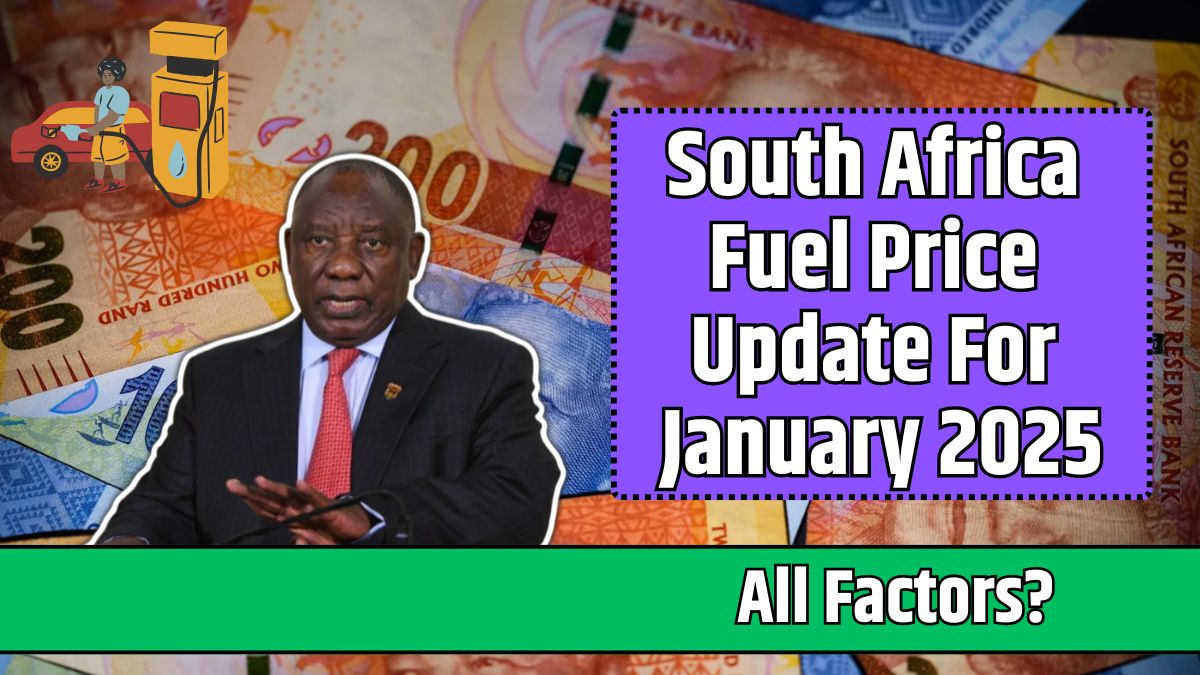As January 2025 approaches, South Africans are bracing for adjustments to fuel prices, a monthly update that impacts households, businesses, and the broader economy.
Regulated by the Department of Energy (DoE), these changes reflect global crude oil trends, the rand’s exchange rate, and local costs.
Understanding these dynamics can help consumers prepare for the financial adjustments these changes bring.
Understanding South Africa’s Fuel Pricing Mechanism
South Africa’s fuel pricing system is unique, operating on a regulated model to ensure uniformity across the country.
Several factors influence monthly price adjustments:
Key Components of Fuel Pricing
| Factor | Impact on Prices |
|---|---|
| Crude Oil Prices | Global oil benchmarks dictate fuel costs, with price hikes stemming from supply disruptions or demand spikes. |
| Exchange Rates | A weaker rand against the US dollar increases the cost of importing crude oil. |
| Logistics and Distribution | Costs associated with transporting fuel from refineries to retail outlets. |
| Taxes and Levies | Includes the Fuel Levy and Road Accident Fund Levy, updated during national budgets. |
This framework ensures transparency, but it also makes South African fuel prices highly sensitive to both global and local changes.
Factors Influencing January 2025 Fuel Prices
Several variables are expected to drive January’s adjustments:
1. Crude Oil Trends
Global crude oil prices remain the most significant driver of local fuel prices. Factors like OPEC production cuts, geopolitical tensions, and natural disasters can disrupt supply, leading to higher costs.
2. Exchange Rate Fluctuations
The South African rand’s performance against the US dollar is another critical factor. A weaker rand raises the cost of importing oil, as crude is traded in dollars. Stabilization of the rand could mitigate these increases.
3. Seasonal and Global Demand
Global winter demand often spikes due to heating needs, affecting oil prices. While South Africa’s summer season limits direct heating demand, global trends indirectly influence local pricing.
4. Domestic Infrastructure and Costs
Local challenges, such as pipeline issues or refinery inefficiencies, can temporarily increase costs.
While rare, these incidents underscore the importance of maintaining robust infrastructure.
Predicted Price Adjustments for January 2025
Based on recent trends and estimates, the following adjustments are anticipated:
| Fuel Type | Current Price (Dec 2024) | Expected Adjustment | New Price (Jan 2025) |
|---|---|---|---|
| Petrol 95 Octane | R21.50/L | +R0.50 | R22.00/L |
| Petrol 93 Octane | R21.30/L | +R0.40 | R21.70/L |
| Diesel (0.05% Sulfur) | R20.00/L | +R0.60 | R20.60/L |
| Diesel (0.005% Sulfur) | R20.20/L | +R0.50 | R20.70/L |
| Illuminating Paraffin | R15.50/L | +R0.30 | R15.80/L |
Note: These figures are preliminary estimates. Official prices will be announced by the Department of Energy.
How to Prepare for Fuel Price Changes
1. Adopt Fuel-Efficient Driving Habits
Reduce fuel consumption by avoiding sudden acceleration, maintaining a steady speed, and ensuring your vehicle is well-maintained.
2. Explore Alternative Transportation
Consider public transport, carpooling, or cycling to minimize personal fuel expenses.
3. Budget for Price Increases
Plan your monthly budget with potential fuel hikes in mind to avoid financial strain.
4. Monitor Official Announcements
Stay updated with the Department of Energy’s price announcements to plan refueling schedules strategically.
The anticipated fuel price adjustments for January 2025 will reflect global and local economic factors, including crude oil trends, exchange rate movements, and domestic costs.
While these changes can strain household and business budgets, proactive planning and energy-efficient practices can help mitigate their impact.
Stay informed, monitor price updates, and adopt smarter consumption habits to navigate the challenges of fluctuating fuel prices effectively.
















